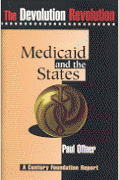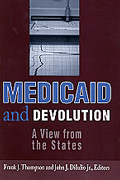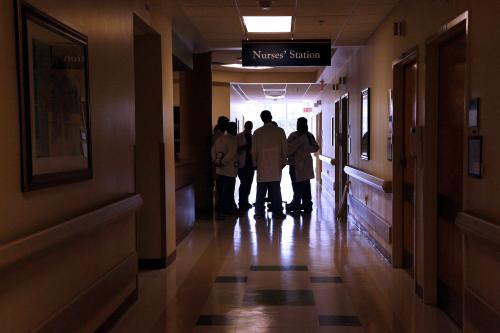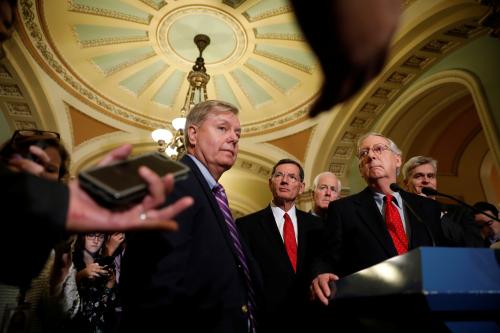What’s the latest in health policy research? The Essential Scan, produced by the USC-Brookings Schaeffer Initiative for Health Policy, aims to help keep you informed on the latest research and what it means for policymakers. If you’d like to receive the biweekly Essential Scan by email, you can sign up here.
Medicaid’s “Best Price” Rule Not Serious Obstacle for Innovative Drug Pricing Models
Rachel Sachs, Nicholas Bagley, and Darius N. Lakdawalla evaluate the argument made by pharmaceutical drug manufacturers that the Medicaid “best price” rule inhibits their ability to enter into value-based purchasing arrangements. The authors conclude that while the best price rule makes the adoption of new pricing models more complex, it is almost always possible for drug companies to restructure their contracts to lessen the impact of the best price rule. The authors also highlight CMS’s demonstrated willingness in offering flexibility and clarity to drug manufacturers as further evidence that Medicaid’s best price rule is not a serious obstacle to pharmaceutical payment reform. Full article here.
Narrow Provider Networks Lower Premiums and Decrease Federal Expenditures

“While many look to price transparency to help consumers save money, narrow network plans are a far more powerful tool.”
-Paul Ginsburg, PhD, Director of the Schaeffer Initiative
Leemore S. Dafny, Igal Hendel, Victoria Marone, and Christopher Ody find that plans with narrow hospital and physician networks on the ACA Marketplaces had premiums 16 percent lower than plans with broad hospital and physician networks in 2014. The authors estimate that these narrow-network plans lowered government expenditures on premium subsidies by roughly $2.4 billion in 2014 through lowering the benchmark premiums that determine subsidies. The rising popularity of these narrow-network plans puts pressure on all plans to lower premiums and encourages broad network plans to increase their value proposition in order to remain competitive. Full article here.
Access to Public Insurance Decreases Crime Rates
 Hefei Wen, Jason M. Hockenberry, and Janet R. Cummings find that state Medicaid expansions between 2001 and 2008 under Health Insurance Flexibility and Accountability (HIFA) Waivers led to a reduction in robbery, aggravated assault, and larceny theft rates. The authors point to increased access to substance use disorder (SUD) treatment through the Medicaid expansions that reduced substance use prevalence, leading to reduced crime rates. The authors estimate that states that increase their SUD treatment rate by 10 percent can reduce the rate of robbery by 3 percent, the rate of aggravated assault by 6 to 7 percent, and the rate of larceny theft by 3 percent. For all states with HIFA waivers, a 10 percent increase in treatment would lead to a crime reduction benefit of $2.9 to $5.1 billion. These positive spillovers could make public insurance expansion an important policy lever in conversations about not only improving public health but also public safety. Full article here.
Hefei Wen, Jason M. Hockenberry, and Janet R. Cummings find that state Medicaid expansions between 2001 and 2008 under Health Insurance Flexibility and Accountability (HIFA) Waivers led to a reduction in robbery, aggravated assault, and larceny theft rates. The authors point to increased access to substance use disorder (SUD) treatment through the Medicaid expansions that reduced substance use prevalence, leading to reduced crime rates. The authors estimate that states that increase their SUD treatment rate by 10 percent can reduce the rate of robbery by 3 percent, the rate of aggravated assault by 6 to 7 percent, and the rate of larceny theft by 3 percent. For all states with HIFA waivers, a 10 percent increase in treatment would lead to a crime reduction benefit of $2.9 to $5.1 billion. These positive spillovers could make public insurance expansion an important policy lever in conversations about not only improving public health but also public safety. Full article here.
Freestanding Emergency Departments Most Likely to Locate in Areas with Better Insurance and Higher Incomes
 Cedric Dark, Yingying Xu, and Vivian Ho find that freestanding emergency departments (EDs) in Texas during 2016 were more likely to locate in areas with higher mean household incomes and higher proportions of privately insured individuals. Interestingly, the authors also find that the entrance of freestanding EDs had no impact on hospital-based ED waiting times, possibly because they chose to locate in areas that already had shorter than average ED wait times. The authors posit that these findings could be driven by the inability of freestanding EDs to collect reimbursement from Medicaid or Medicare, which encourages them to locate in areas with high rates of private insurance. Allowing freestanding EDs to collect reimbursement from Medicaid and Medicare could catalyze the expansion of freestanding EDs into areas that could benefit most from access to acute unscheduled care. Full article here.
Cedric Dark, Yingying Xu, and Vivian Ho find that freestanding emergency departments (EDs) in Texas during 2016 were more likely to locate in areas with higher mean household incomes and higher proportions of privately insured individuals. Interestingly, the authors also find that the entrance of freestanding EDs had no impact on hospital-based ED waiting times, possibly because they chose to locate in areas that already had shorter than average ED wait times. The authors posit that these findings could be driven by the inability of freestanding EDs to collect reimbursement from Medicaid or Medicare, which encourages them to locate in areas with high rates of private insurance. Allowing freestanding EDs to collect reimbursement from Medicaid and Medicare could catalyze the expansion of freestanding EDs into areas that could benefit most from access to acute unscheduled care. Full article here.
SNAP Participation Decreases Medical Spending for Low-Income Adults
Seth A. Berkowitz, Hilary K. Seligman, and coauthors find that participation in the Supplemental Nutrition Assistance Program (SNAP) decreases the annual health care expenditures of a low-income adult by approximately $1,400-a significant decrease considering that the average annual SNAP benefit is $1,548 and that the program is not designed to lower health care costs. This study supports the idea that SNAP can lower health care expenditures in the short run by enhancing disease self-management and reducing stress. The authors suggest that making it easier for eligible adults to enroll in SNAP may improve the health of many low-income Americans and lower state spending on programs such as Medicaid. Full article here.












Commentary
The essential scan: Top findings in health policy research
October 5, 2017